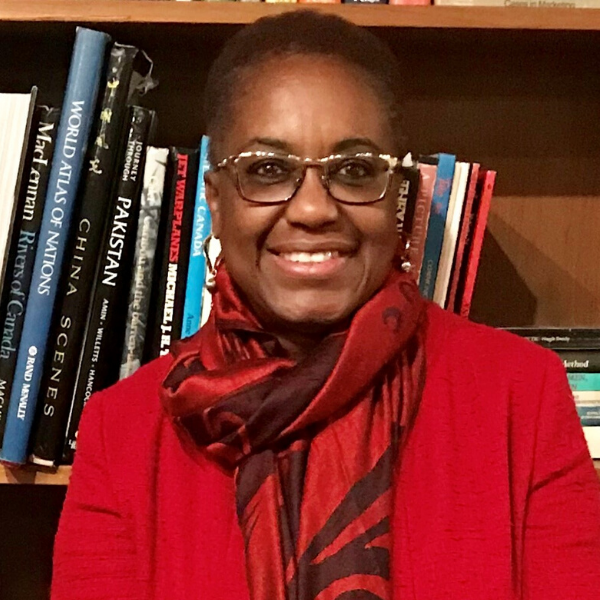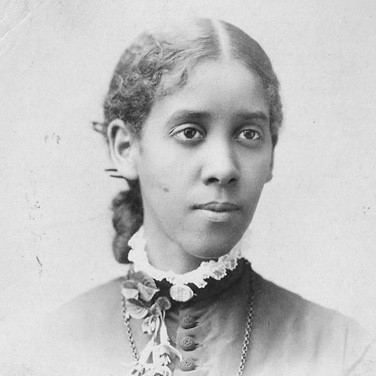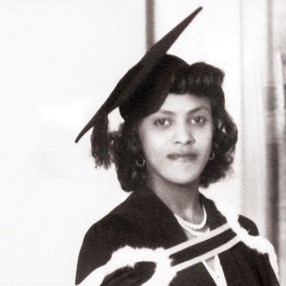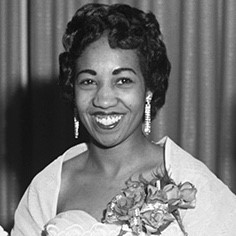Guest blog by Dr. Malinda S. Smith, a Professor of Political Science and a 2018 Pierre Elliott Trudeau Foundation Fellow at the University of Alberta, a former Executive member (Equity & Diversity) on the FHSS Board, coauthor of The Equity Myth (2017), and a coeditor of the forthcoming book, The Nuances of Blackness in the Canadian Academy.
As Congress 2020 undertakes to “Bridge Divides” and confront the intersections of colonialism and anti-Black racism, it is critical to confront the histories and multiplicity of Black lives in Canada. As Desmond Cole’s new book reminds us, Black lives are neither reducible to “The Skin We’re In” nor to singular narratives of the Black experience. Yet, reports of humiliating incidents of profiling continue to proliferate, including the experience of Black graduate student Shelby McPhee at the 2019 Congress. We are reminded that Black lives in Canada are often reduced to fixed and singular identities – the violence of stereotypes, of being deemed “out of place,” and of being “under suspicion” and surveillance – even in the academy.
Drawing on novelist Chimamanda Adichie, I want to underline “The danger of a single story,” which “creates stereotypes, and the problem with stereotypes is not that they are untrue, but that they are incomplete. They make one story become the only story,” and, in so doing, they rob Black people of their humanity, dignity, and futures.
At the heart of my meditation is a fatigue with the hegemonic deficit stories of Blackness that often circulate in the academy. I am particularly concerned about the tyranny of low expectations and the debilitating lens through which the stories of Black scholars are too-often told – of B(lack) or Black-as-lack, as being out of place, as not belonging. This lens manifest in so many ways, not the least when Black students are carded, when Black professors are mistaken for the cleaning staff at universities and conferences, when they are refused access to the professoriate, or denied a seat at the table of university leadership.
This moment of “Bridging Divides” invites us to attend to the many stories that, in Isabel Allende’s poetics, get “lost in the fog of repetitive absence,” and other stories that are mobilized to constrain Black futures.There is an urgent need to attend to the ways deficit stories circulate and what those stories do. As poet and novelist Ben Okri writes in Birds of Heaven (1995), “It is easy to forget how mysterious and mighty stories are. They do their work in silence, invisibly. They work with all the internal materials of the mind and self. They become part of you while changing you.” Stories can change lives. They can destroy lives, too. In A Way of Being Free, Okri (1997) reminds us of the potentially transformative power of telling different stories: “If we change the stories we live by, quite possibly we change our lives.”
Bridging divides begins with a recognition that knowledges inherited from slavery and colonialism continue to circumscribe our collective social and literary record and imaginaries. Telling different stories has the potential to reignite historical memory by stitching together fragments of Black lives and hidden stories that have been “lost in the fog of repetitive absence.” Here I briefly recount three counter-narratives of trailblazing Black women who resolutely defied social barriers, pushed back against the weight of stereotypes, and pursued their higher education aspirations on the Indigenous territories that we now know as Canada.
Sophia B. Jones (1857-1892)
Few Canadians know about physician Sophia B. Jones, who was born in Chatham, Ontario. In some biographical accounts she is characterized as a Canadian-born American physician. According to Nina Reid-Maroney at Huron College, “Sophia Jones exemplifies the way in which women followed the opportunities of higher education opening to them in the United States, and used that education as passage through and beyond the restrictions on women’s public roles in late-Victorian Canada.” Because she was a woman, and Black, Jones was denied full access to medical education at the Toronto Medical School. Determined to pursue her aspirations, however, she moved to the United States and became the first Black woman to graduate from the University of Michigan’s Medical School in 1885. In that year, she also became the first Black professor at Spelman College in Atlanta, Georgia where she started Spelman’s nursing program. Jones authored many publications, including “Fifty Years of Negro Public Health,” which appeared in a special issue on “Negro Progress” in Political and Social Sciences in 1913. Over the course of her career Jones travelled in search of opportunities, working at Wilberforce University and practicing medicine across the U.S. Midwest. Although her story is little known in Canada, her trailblazing continues to be recognized at the University of Michigan with the Sophia B. Jones Lecture in Infectious Diseases, a Sophia B. Jones conference room, and the Black students’ alumni society – Fitzbutler Jones Alumni Society – named in her honour.
Ivy Lawrence Maynier (1922-1999)
In Canada, Black scholars have long had to overcome the intersecting obstacles of the colour line and the glass ceiling. This was certainly the case for Ivy Lawrence Maynier (1921-1999), who was born in Montreal to parents from Trinidad. Maynier obtained a BA from McGill University and went on to become the first Black woman, and woman of colour, to graduate from the University of Toronto Law School in 1945, and the first student to graduate with an honours degree in international law. Had she stayed in Ontario or returned to Quebec, she likely would have become the first Black woman to be called to the Bar in Canada. However, Maynier was called to the British Bar in 1947 and practiced law in Britain and in Trinidad, before working with the United States Information Services in Paris, and teaching in Continuing Studies at the University of the West Indies in Jamaica. Lennox Bernard, a Resident Tutor at UWI, recalls that Maynier moved, “with ease and panache among the upper class and the intellectual elite, but she also related directly to the various dispossessed groups and communities…She was pragmatic, innovative, people-oriented, radical at times, strong-willed and an agent of social change.”
At the University of Toronto, an endowed scholarship for marginalized students is co-named after Maynier and her classmate and former fiancée, Peter Fuld, a self-described German “half-Jew,” who similarly faced discrimination and marginality in the Canadian academic and broader communities of the 1940s. An Ebony Magazine article, entitled “The Legacy of a Love Affair,” describes the evolution of the Maynier-Fuld relationship which birthed the scholarship. The two were engaged and planned to spend their lives together, but Fuld’s German mother, Fran Ida Fuld, objected and reportedly threatened to kill herself if her son married a “Negro.” Fuld died of cancer but bequeathed 15 percent of his estate to Maynier who, upon her death, bequeathed $600,000 to the Faculty of Law, where the legacy of this improbable love affair continues in the Maynier-Fuld scholarship.
Violet King Henry (1929-1982)
Violet King Henry was born in Calgary in 1929 to a family of Alberta’s Black pioneers – African Americans who emigrated from Oklahoma in 1910 and established all-Black communities in Keystone (now Breton) in central Alberta, and in Amber Valley in northern Alberta. King pursued her post-secondary education at the University of Alberta, where she accomplished a series of “firsts.” King was an engaged student who was elected as vice-president of the Students’ Union, serving with SU president Peter Lougheed. She obtained a BA in History (1952) and the following year was the only woman in her Law School graduating class, becoming the first Black person in Alberta to graduate with a law degree. After articling with the law firm of Edward J. McCormick, Q.C. in Calgary, King became the first Black person to be called to the Alberta Bar (1954) as well as the first Black woman lawyer in Canada.
“People told me it wasn’t a good idea for a girl to be a lawyer, particularly a coloured girl—so I went ahead,” King recalled in a speech to the Beta Sigma Phi Sorority in Calgary in 1956. King voiced a prevailing recognition among Black folk that, “you have to be twice as good to get half as far” when she lamented, “It is too bad that a Japanese, Chinese or coloured girl has to outshine others to secure a position.”
Throughout her career, King actively advanced women’s rights, women in leadership, and equal pay for equal work. As one of a handful of women lawyers working in private practice, she represented clients in domestic violence, and in estate and criminal law cases. Two years after being called to the Alberta Bar, King accepted a federal government position as assistant to the chief liaison officer for the Canadian Department of Citizenship and Immigration. A 1956 Winnipeg Free Press article, entitled “Colored girl’s career in law leads to Ottawa,” described King’s career as fulfillment of a kind of Canadian dream – “Blazing a trail as the first woman negro lawyer in Canada has proven this country a land of opportunity to Violet King.”
Yet, the frequent moves that mark the careers of the three stories I recount here also gesture towards the ways in which the intersections of racism and sexism limited opportunities for advancement for Black women no matter how talented. After seven years in Ottawa, King migrated to the United States, where in 1963 she became the first woman to hold any executive position at the YMCA. As the Executive Director of the YMCA Community Branch in Newark, New Jersey, she worked with African Americans seeking employment, later moving to Chicago to serve as the YMCA’s Director of Manpower, Planning and Staff Development. When King was promoted to Executive Director of the YMCA’s National Council in 1976, she became the first woman to hold a national executive position with that prominent organization. Violet King was only 52 years old when she died of cancer in New York on March 30, 1982.
These are only three among myriad stories of Black lives, past and present, in the Canadian academy. These stories defy single narratives that bring into being an idea of Blackness that fits, or is made to fit, the stereotypes of Black-as-lack or being out of place, underlining instead the historical complexity of the lived realities and struggles of Black Canadians pursuing higher education. There is a fundamental distortion of the diversity and complexity of global diasporic Blackness that informs the heterogeneity of the Black lives across Canada’s vast geography. Confronting anti-Black racism necessarily begins with laying bare stereotypes that construct Black-as-lack, as out of place and not belonging, and that make possible, indeed produce, persistent Black marginality in the Canadian academy. We need these different stories because, quite possibly, they may change our lives as we chart more just futures.
Editor's note: For more information about the racial profiling incident at Congress 2019 please see the Federation's statement on the outcomes of the investigation.




